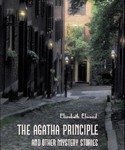The end of 2014 will mark 200 years since the Treaty of Ghent ended the the War of 1812. When this subject is raised in Canada, we tend to think of the battles on the Great Lakes, but two years ago, during a trip to Louisiana, I was reminded of the impact of that war upon the South. While there, I picked up a copy of Robert V. Remini’s book, The Battle of New Orleans, which gave a enthralling account of the decisive U.S. victory where the Duke of Wellington’s brother-in-law died and Andrew Jackson became a national hero. Ironically, the battle took place in the New Year, after the treaty had been signed, for in those pre-Internet days, news took time to travel.
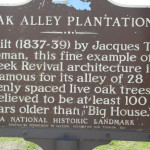
This book, combined with a fascinating tour of Oak Alley, prompted me to write a story where my feisty city councillor, Bertram Beary, and his wife Edwina, uncover a historical mystery during a similar tour of a fictitious plantation called The Oaks. Having purchased a Southern Belle doll from the gift shop, Beary and Edwina discover a small cemetery where the graves of a man, a woman and a dog indicate that all three died on the same day—January 8, 1815, which incidentally, was the final day of The Battle of New Orleans. The woman’s name matches one of the gift-shop dolls.
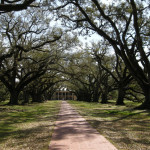
Trying to set a mystery within the historical events of the battle was a challenge, but an enjoyable and absorbing one: how to single out a solitary murder within a day when so many lives were lost, and how to find the isolated spot where this could happen amid the furor on the outskirts of the city. Plantations, bayous and the rolling Mississippi. No one could have had a more stimulating setting.
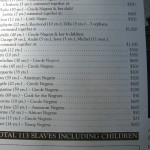
Remini’s book is an excellent read for those who like history, and Oak Alley is well worth a visit for anyone travelling to Louisiana. The avenue of three-hundred-year-old oaks is breathtaking, and the tour of the antebellum mansion and grounds is enlightening. An information plaque at the start of the avenue lists every slave who served on the plantation, along with his or her appraised value. Reading the dollar values attached to the descriptions, not to mention the difference between the big house and the slave quarters, conveniently located close to the young men’s house, brings home the sobering realities of the slave trade.
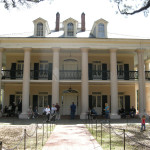

The big-house tour is an antique lover’s paradise. Every room is graced with elegant period treasures. The scroll-armed walnut chairs in the parlour are upholstered in the same powder-blue velour as the drapes. Pedestal tables with intricate marquetry are adored with silver sweetmeat baskets or gilded porcelain vases. A lyre-backed stool sits by the grand piano.

Two items were particularly fascinating. A tiny circular mirror embedded into the lower, right-hand corner of a larger mirror turned out to be a convex mirror in which a chaperone, from her position on the chair by the door, could glance across and see everything that was happening within the room. Even more intriguing was a pigtail-shaped candlestick that turned out to be a courting candle. It could be set high or low, but when the candle burned down to the rim, it was time for the beau to go home.

After the tour, we couldn’t resist buying a souvenir courting candle from the gift shop. It now holds pride of place on the coffee table in our living room, and Robert V. Remini’s book sits on my bookshelf, alongside Robert Malcomson’s Lords of the Lake, which describes the naval war on Lake Ontario. North and South—what riveting tales they hold—and what inspiration for weaving tales of one’s own.
[box] From “Tragedy at the Oaks” (The Agatha Principle and Other Mystery Stories)
“Look,” said Edwina. “There’s a monument amid the camellia bushes. I wonder whose grave it marks.”
Beary was never one to let a boundary stand in his way. He stepped over the fence and plodded across the grass. “You shouldn’t go in there,” protested Edwina. “They have it fenced off.”
Beary ignored his wife and pushed his way through the camellia bushes. “Well, well, well,” he said, staring at the inscription. “It’s a good job you bought the Marianne doll for Chelsea.”
“What has that to do with anything?” demanded Edwina.
“Because I suspect that I’ve just found the grave of the black-eyed doll in the red dress. Marguerite Lockhart—another beloved wife and mother, except she isn’t the beloved wife of George Lockhart, she’s the beloved wife of Nathaniel Lockhart, whoever he was.”
“So why should that make her an unsuitable subject for a doll for Chelsea?” Edwina asked inquisitively.
“Because,” said Beary, “unlike Marianne, she didn’t live to a ripe old age. She died when she was only thirty-three. And what’s more,” he added, avid curiosity emanating from every pore, “she died on January 8, 1815 . . . the same day as George and the poor little dog.” .[/box]

